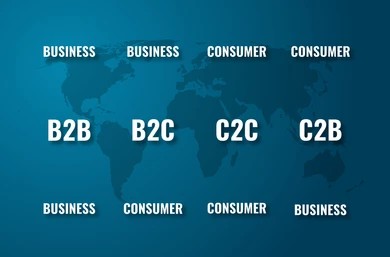E-Commerce Web Solution
Introduction
In today’s digital economy, businesses are increasingly shifting from physical storefronts to online platforms. An e-Commerce web solution is the foundation of this transformation. It refers to the set of tools, technologies, and strategies that enable organizations to sell products and services online, manage operations digitally, and connect with global customers seamlessly. With the exponential rise in internet usage, smartphone penetration, and online payment adoption, e-Commerce has become not just a competitive advantage but a necessity for survival.
This document explores the concept of e-Commerce web solutions in detail, covering their components, benefits, challenges, technologies, and future trends.

What is an e-Commerce Web Solution?
An e-Commerce web solution is a comprehensive digital platform that allows businesses to create, manage, and operate an online store. It integrates various features such as product catalog management, shopping carts, payment gateways, logistics support, customer service, and marketing tools. These solutions are designed to provide a seamless shopping experience to customers while enabling businesses to scale efficiently.An e-Commerce solution can be built from scratch, customized on open-source platforms (like Magento, WooCommerce, or OpenCart), or developed using SaaS-based services (like Shopify, BigCommerce, or Wix).
Core Components of an e-Commerce Web Solution
The foundation of an e-Commerce solution is the storefront—whether a website or a mobile application—that serves as the first point of interaction with the customer. A successful storefront must combine speed, responsiveness, and ease of use. Intuitive navigation, clear product categorization, fast-loading pages, and features such as advanced search, filters, and wishlists all contribute to a better customer experience.Behind the storefront, a product management system ensures that every detail—images, descriptions, pricing, and availability—remains consistent and up to date across channels. This is vital for both customer trust and operational efficiency.
Types of e-Commerce Solutions
Business-to-Consumer (B2C): Selling directly to end customers (e.g., Amazon, Flipkart).
Business-to-Business (B2B): Facilitating bulk orders between businesses (e.g., Alibaba).
Consumer-to-Consumer (C2C): Platforms where individuals sell to individuals (e.g., eBay, OLX).
Consumer-to-Business (C2B): Individuals offering services to businesses (e.g., freelance marketplaces).

Benefits of an e-Commerce Solution
The advantages of adopting an e-Commerce solution are extensive. Perhaps the most obvious is global reach. Unlike physical stores that are tied to a location, online platforms allow businesses to access customers across geographies, expanding their markets significantly.Operational costs are also considerably lower, as companies save on expenses related to rent, utilities, and staff. At the same time, e-Commerce platforms never close—customers can shop 24/7, increasing sales opportunities.
A key strength lies in personalization. Data analytics and AI make it possible to deliver customized recommendations, tailored promotions, and dynamic pricing. This leads to stronger engagement and higher conversion rates. Scalability is another important advantage. New products, categories, or even entire markets can be added with minimal disruption and overhead.
Challenges in Implementing
Despite their many benefits, e-Commerce solutions come with challenges. Security remains a major concern, with cyberattacks, fraud, and data breaches posing risks to both businesses and customers. The competitive landscape is also intense, requiring constant innovation to stand out in a crowded market.Building customer trust is not always easy, especially for newer brands. Issues with logistics and supply chains, such as delayed deliveries or inaccurate inventory management, can damage customer confidence. Businesses also depend heavily on technology; frequent updates, bug fixes, and platform reliability are critical to maintaining smooth operations.
Technologies Powering e-Commerce Solutions
The foundation of an e-Commerce solution is the storefront—whether a website or a mobile application—that serves as the first point of interaction with the customer. A successful storefront must combine speed, responsiveness, and ease of use. Intuitive navigation, clear product categorization, fast-loading pages, and features such as advanced search, filters, and wishlists all contribute to a better customer experience.
Behind the storefront, a product management system ensures that every detail—images, descriptions, pricing, and availability—remains consistent and up to date across channels. This is vital for both customer trust and operational efficiency.
Future Trends
Looking ahead, voice commerce is set to grow as customers increasingly shop via smart speakers and voice assistants. Social commerce—shopping directly on platforms like Instagram, TikTok, and Facebook—is also gaining traction. Sustainability is emerging as a priority, with businesses focusing on eco-friendly packaging, carbon-neutral shipping, and ethical sourcing.Omnichannel experiences will become the norm, as businesses integrate online and offline channels to deliver seamless shopping journeys. Hyper-personalization, powered by AI, will take customization to new levels, while subscription-based models and flexible payment options like BNPL will continue to reshape consumer expectations.
Best Practices for Success
To implement a successful e-Commerce solution, businesses must start by choosing the right platform, balancing scalability, customization, and cost. User experience should remain at the core, with responsive design, intuitive navigation, and fast loading times. Robust security measures must be prioritized to protect customer data and build trust.
Data analytics should be leveraged to track performance and optimize strategies continuously. Marketing automation, mobile-first design, and efficient logistics partnerships all play a crucial role. Equally important is customer support, whether through chatbots, FAQs, or live chat, ensuring quick resolutions and lasting relationships.
